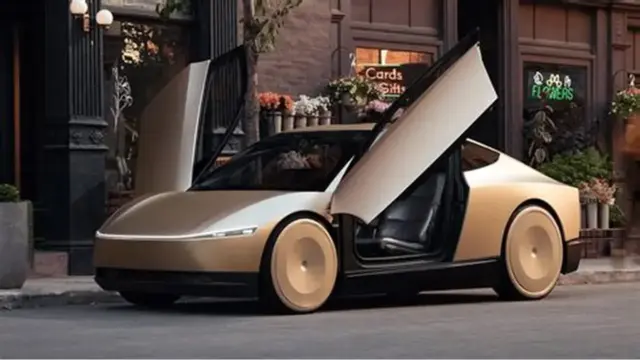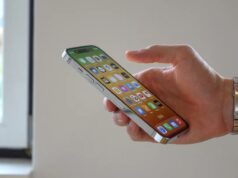
Tesla has announced a significant milestone in autonomous driving, successfully completing its first fully driverless delivery of a new vehicle to a customer. A Tesla Model Y, operating entirely on its Full Self-Driving (FSD) system, navigated city streets and highways from Gigafactory Texas in Austin to the new owner’s home, marking a notable advancement in the company’s autonomous vehicle ambitions.
Key Takeaways:
• Tesla completed its first fully driverless delivery of a Model Y to a customer in Austin, Texas.
• The journey covered approximately 30 minutes, navigating both city streets and highways.
• No human occupant or remote operator controlled the vehicle during the delivery.
• The Model Y reached speeds up to 72 miles per hour on the highway.
• This milestone follows the recent launch of Tesla’s robotaxi service in Austin.
• The delivery underscores Tesla’s commitment to advancing its Full Self-Driving technology.
This unprecedented delivery, which took place on Friday, June 27, 2025, involved no human occupant in the vehicle and no remote operators in control at any point during the roughly 30-minute journey. This achievement comes just days after Tesla launched its highly anticipated robotaxi service in Austin, further solidifying the company’s focus on autonomous technology as a core pillar of its future.
The Model Y, a popular electric SUV known for its range and versatility, departed from the production line at Gigafactory Texas, an expansive manufacturing facility located near Austin. The vehicle then proceeded to navigate public roads, including segments of a highway where it reportedly reached a maximum speed of 72 miles per hour. Tesla’s Head of AI and Autopilot, Ashok Elluswamy, confirmed the details of the journey, emphasizing the fully autonomous nature of the delivery.
This event represents a direct fulfillment of a long-standing promise from Tesla CEO Elon Musk, who has consistently stated that fully autonomous capabilities are central to the company’s vision. Musk himself confirmed the successful delivery via a post on X, highlighting that the delivery was completed a day ahead of his previously stated schedule of June 28, his 54th birthday. He stated, “The first fully autonomous delivery of a Tesla Model Y from factory to a customer home across town, including highways, was just completed a day ahead of schedule!! Congratulations to the @Tesla_AI teams, both software & AI chip design!”
The Journey to Full Autonomy: Tesla’s FSD Evolution
Tesla’s Full Self-Driving (FSD) system, a sophisticated suite of advanced driver-assistance features, has been under continuous development for years. Unlike conventional driver-assistance systems that offer limited automation, Tesla’s FSD aims for a higher level of autonomy, eventually allowing the vehicle to drive itself with minimal to no human intervention.
The FSD package, an optional upgrade for Tesla vehicles, includes features such as:
• Navigate on Autopilot: Actively guides the vehicle from a highway’s on-ramp to off-ramp, suggesting lane changes, navigating interchanges, and taking the correct exit.
• Auto Lane Change: Assists in moving to an adjacent lane on the highway when Autosteer is engaged.
• Autopark: Helps automatically parallel or perpendicular park the vehicle.
• Summon: Allows the vehicle to move in and out of tight parking spaces using the mobile app.
• Traffic Light and Stop Sign Control: Recognizes and responds to traffic lights and stop signs, bringing the vehicle to a stop.
It is important to note that until recently, Tesla’s FSD system, even in its most advanced form, has been classified as a Level 2 driver assistance system by industry standards. This classification means that while the system can handle many driving tasks, a fully attentive driver must keep their hands on the wheel and be prepared to take over at any moment. The driverless delivery marks a significant step towards higher levels of autonomy, potentially moving into Level 4 capabilities for specific operational design domains, where the vehicle can handle all driving tasks under certain conditions without human intervention.
Tesla’s approach to developing FSD heavily relies on real-world data collected from its fleet of vehicles. Millions of miles driven by Tesla owners using Autopilot and FSD (supervised) contribute to a vast dataset that helps train and refine the neural networks powering the autonomous system. This iterative process, coupled with over-the-air software updates, allows Tesla to continuously improve its FSD capabilities.
Beyond the Hype: Practical Implications of Driverless Delivery
The successful driverless delivery carries substantial implications for the automotive industry and beyond. On a practical level, it could streamline the vehicle delivery process, reducing logistics costs and potentially speeding up delivery times for customers. Instead of requiring human drivers or specialized transport trucks, new vehicles could autonomously drive themselves from the factory to dealerships or directly to customer homes. This could be particularly beneficial for customers in areas near Tesla’s Gigafactories or distribution centers.
For consumers, the prospect of a new car arriving at their doorstep, having driven itself, could transform the car buying experience. It moves the concept of automated convenience beyond just driving and into the realm of logistics and personal vehicle ownership.
However, the broader impact extends to the validation of Tesla’s autonomous technology. The ability of a vehicle to independently navigate complex real-world conditions, including interactions with other traffic, pedestrians, and varied road infrastructure, speaks volumes about the maturity of Tesla’s FSD system. This public demonstration serves as a powerful testament to the progress made by Tesla’s AI and engineering teams.
Industry Context and Regulatory Landscape
While Tesla’s recent achievement is groundbreaking for direct-to-customer deliveries, other autonomous vehicle companies have also been making strides in different operational areas. Companies like Waymo, for instance, have been operating fully driverless robotaxi services in select cities like Phoenix, San Francisco, and parts of Los Angeles for some time. These services often involve a geofenced operational domain and may include human safety operators in the passenger seat in certain pilot phases. Waymo has also demonstrated driverless highway operations with employees.
The key distinction in Tesla’s announcement is the direct, unassisted delivery of a new car to a customer’s residence across a mixed urban and highway environment, without any human onboard or remote oversight during the actual journey. This specific use case highlights a different facet of autonomous capability.
The regulatory landscape for autonomous vehicles remains in flux globally. Governments and transportation authorities are grappling with how to classify, test, and approve increasingly autonomous systems. While Tesla’s FSD is marketed as “supervised” and currently requires human monitoring for general use, the driverless delivery opens up new questions regarding liability, safety protocols, and the scope of permissible autonomous operations without human presence. The National Highway Traffic Safety Administration (NHTSA) in the U.S. has previously investigated incidents involving Tesla’s Autopilot and FSD systems, underscoring the ongoing scrutiny and the need for rigorous safety standards as autonomous technology evolves. Tesla’s ability to demonstrate such a delivery publicly will likely intensify discussions around regulatory frameworks.
Public Reception and Future Outlook
The announcement has generated significant discussion across social media platforms and automotive forums. Many are expressing excitement and optimism about the future of autonomous vehicles, viewing it as a clear sign of progress towards a more automated transportation system. Others maintain a cautious stance, citing past challenges and emphasizing the need for continued rigorous testing and robust safety measures before widespread deployment of fully unsupervised autonomous driving. Concerns often revolve around the system’s ability to handle unpredictable “edge cases” – unusual or rare driving scenarios that are difficult to program for.
Despite these differing perspectives, the driverless delivery signals Tesla’s strong belief in its FSD technology. This event serves not only as a technical demonstration but also as a strategic move to build public confidence and showcase the practical applications of its advanced AI.
Looking ahead, Tesla aims to scale its robotaxi service and integrate autonomous capabilities more deeply into its operations. The long-term vision includes a future where Tesla vehicles can operate as part of a vast autonomous ride-hailing network, potentially generating significant revenue. The ability to autonomously deliver new cars could be a foundational step in building out this larger ecosystem. As Tesla continues to refine its FSD software, events like this driverless delivery will be crucial in demonstrating the system’s capabilities and pushing the boundaries of what autonomous vehicles can achieve.
FAQs about Tesla’s Driverless Delivery
Q1: What exactly does “driverless delivery” mean in this context?
A1: In this context, “driverless delivery” means the Tesla Model Y drove itself from the Gigafactory Texas to the customer’s home without any human in the driver’s seat, passenger seat, or anyone remotely controlling the vehicle during the entire journey. It relied solely on its onboard Full Self-Driving (FSD) system.
Q2: Is this the same as Tesla’s Robotaxi service?
A2: While both utilize Tesla’s Full Self-Driving technology, the driverless delivery is a distinct application. The recently launched robotaxi service in Austin generally involves a Tesla employee in the passenger seat as a safety monitor, ready to intervene if needed. The driverless delivery of a new car had no human oversight during the operation.
Q3: What specific Tesla technology enabled this driverless delivery?
A3: The delivery was made possible by Tesla’s Full Self-Driving (FSD) system, which uses a combination of cameras (Tesla Vision), neural networks, and sophisticated AI algorithms to perceive the environment, plan routes, and execute driving maneuvers on public roads, including highways and city streets.
Q4: How far did the Tesla vehicle travel during this autonomous delivery?
A4: The exact distance has not been officially released, but reports indicate the journey was “across town” from Gigafactory Texas in Austin to the customer’s home, taking approximately 30 minutes. This suggests a notable distance involving varied driving conditions.
Q5: Are driverless deliveries of new cars going to become standard for Tesla?
A5: While this marks a successful first, it is not immediately clear if fully driverless deliveries will become a standard practice for all Tesla new car sales. It serves as a strong demonstration of capability and could pave the way for more widespread autonomous logistics in the future, subject to regulatory approvals and ongoing system reliability.
Q6: How does Tesla’s FSD system compare to other autonomous driving systems like Waymo?
A6: Tesla’s FSD system, while highly advanced, has historically been classified as a Level 2 driver assistance system requiring active human supervision. Companies like Waymo operate Level 4 autonomous services in geofenced areas, where the vehicle handles all driving tasks under specific conditions without human intervention. Tesla’s driverless delivery pushes its FSD capabilities into a realm that approaches Level 4 for specific operational scenarios, though it is a different use case than Waymo’s robotaxi service.
Q7: What are the safety implications and regulatory challenges for such deliveries?
A7: Safety is paramount for autonomous vehicle deployment. Regulators globally are working to establish frameworks for autonomous vehicles. Driverless operations without human oversight, even for deliveries, raise questions about liability in case of incidents and the need for robust safety validation. Tesla will likely need to continue working closely with regulatory bodies to expand such operations.










